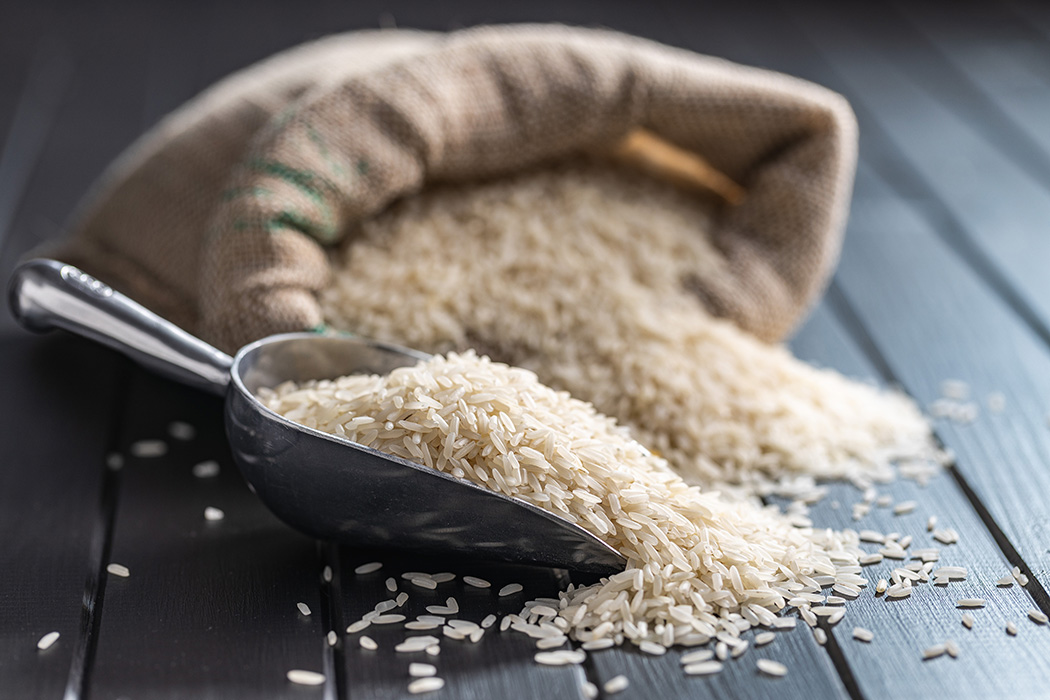Thailand’s agricultural exports struggled in the first half of 2025, with rice exports totaling only 3.05 million tons, down 25.61% year-on-year, due to a global supply glut and aggressive price competition from India. Although cassava exports increased in volume, revenues declined as prices fell. In response, the Ministry of Commerce has rolled out a series of measures and promotional activities to accelerate exports in the second half of the year, while tightening controls to curb fraudulent practices and preparing countermeasures ahead of trade talks with the United States.
Rice Exports Down Sharply in First Half
From January to May 2025, Thailand exported 3.05 million tons of rice, compared with 4.10 million tons during the same period last year. Export value dropped 34.03% to 63.1 billion baht (USD 1.88 billion). The decline stems from higher global rice output, with world production expected to reach 541 million tons in 2025, up 17 million tons from last year. India, now the world’s largest producer with over 150 million tons and stockpiles exceeding 60 million tons, has returned to the export market with highly competitive prices. Meanwhile, demand from major importers such as Indonesia has fallen significantly.
Key Thai rice export markets include Iraq (0.41 million tons, +13.9%), the United States (0.37 million tons, +8.8%), South Africa (0.28 million tons, +21.7%), China (0.25 million tons, +78.6%), and the Philippines (0.13 million tons, -55.2%). The U.S. remains Thailand’s most important market, importing an average of 1.36 million tons of rice annually, with Thai rice accounting for 58% of the total, particularly premium jasmine rice. Rising health consciousness and demand from Asian and Hispanic communities in the U.S. continue to support sales.
To meet the annual export target of 7.5 million tons, the Department of Foreign Trade (DFT) plans aggressive marketing campaigns—both online and onsite—in the second half of 2025 to sustain demand and ensure continued purchasing of Thai rice.
Cassava Exports Rise in Volume but Fall in Value
Cassava exports in the first five months of 2025 reached 4.06 million tons, up 37.16% from the previous year. However, export value dropped 7.11% to 45.36 billion baht (USD 1.35 billion) due to weaker prices. China remains the largest buyer, accounting for 51.38% of exports, followed by Japan, Indonesia, Malaysia, and the United States.
To support the sector, Thailand will host the World Tapioca Conference 2025 in Bangkok from July 29–31, providing a platform for trade negotiations and networking. The government also plans trade missions to markets such as Japan and New Zealand in August to expand demand for cassava and starch products.
Tighter Export Controls and Trade Remedies
As trade negotiations with the United States intensify, Thailand is tightening oversight to prevent fraudulent exports under preferential tariff schemes. The DFT is updating its export watchlist from 49 to 65 items, with official regulations expected in July 2025. In addition, the ministry will strengthen the issuance process for certificates of origin to assure U.S. authorities that Thai exports are genuinely produced domestically.
Thailand is also stepping up trade remedy measures to protect local industries from unfair competition. Currently, Thailand imposes anti-dumping (AD) duties on imports from 22 cases across 22 countries, mainly steel products, while facing AD measures from 18 countries in 73 cases. Thailand is also subject to countervailing duties (CVD) in seven cases from India, the U.S., and Vietnam, and safeguard measures in 19 cases from nine countries.
In the second half of 2025, the DFT expects ongoing investigations into new AD, safeguard, and anti-circumvention cases, while providing consulting support for domestic industries to file petitions for trade protection.
“Read the original article at: https://www.prachachat.net/prachachat-top-story/news-1837836”



